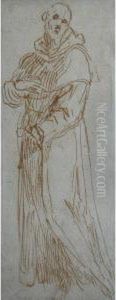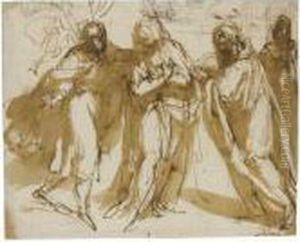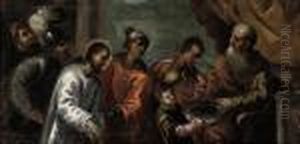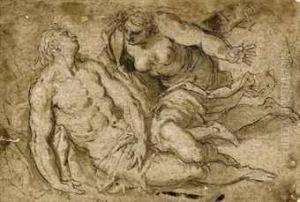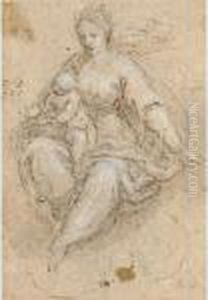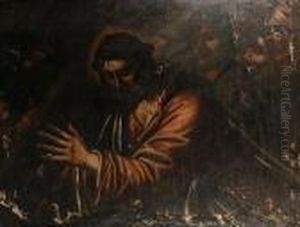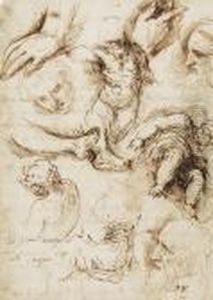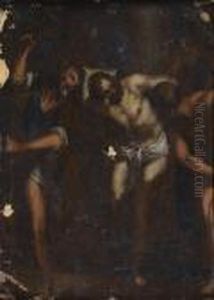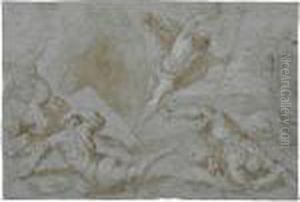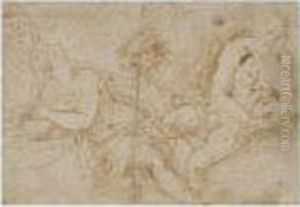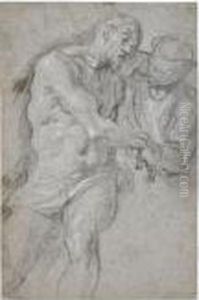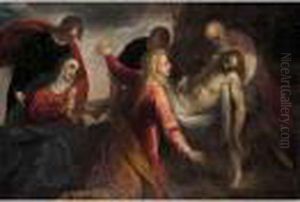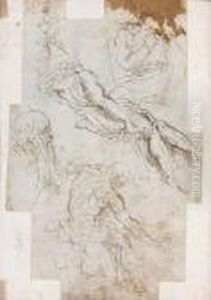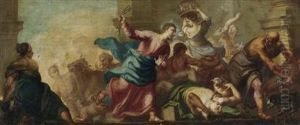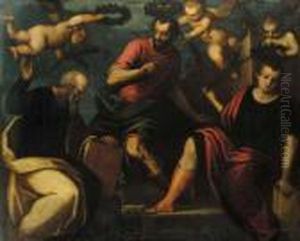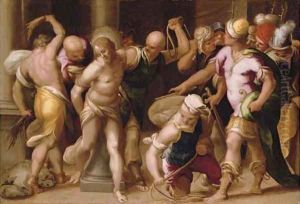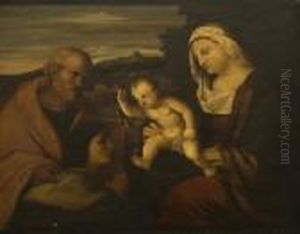Acopo D'Antonio Negretti (see Palma Giovane) Paintings
Jacopo d'Antonio Negretti, better known as Palma Giovane or Younger Palma, was an Italian painter born in Venice around 1548/50. He was the great-nephew of the Renaissance painter Palma Vecchio, a connection that significantly influenced his artistic lineage and style. Palma Giovane's early life is somewhat obscured, but it is known that he trained in his youth in Venice, possibly in the workshop of Antonio Moro.
His work represents a transition from the Renaissance to the Mannerist style, blending elements from both periods with a unique flair that was all his own. While he began his career influenced by the works of Titian and Tintoretto, Palma Giovane eventually developed a more personal style characterized by dynamic compositions, dramatic lighting, and a vivid use of color.
Throughout his career, Palma Giovane received numerous commissions from Venetian nobility and religious institutions, which allowed him to work on a variety of projects, including altarpieces, frescoes, and portraits. One of his most significant contributions was to the decoration of the Doge's Palace in Venice, where his frescoes still stand as a testament to his artistic legacy. Additionally, his work in the Scuola Grande di San Giovanni Evangelista and the Basilica di San Giovanni e Paolo further cemented his reputation as a master of Venetian painting.
Palma Giovane's influence extended beyond his lifetime, impacting the development of Baroque art in Venice. Despite facing competition from contemporaries like Paolo Veronese and Jacopo Tintoretto, Palma Giovane carved out his own niche, leaving behind a body of work that reflects both the culmination of Venetian Renaissance art and the beginnings of a new artistic era. He died in Venice in 1628, leaving a lasting legacy that continues to be studied and admired. His works are preserved in major museums and collections worldwide, showcasing the breadth and depth of his artistic achievements.
